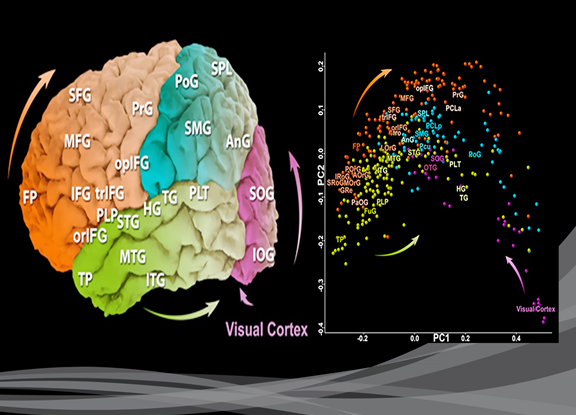Visual Cognition Result of Parallel Evolution of Tool Development, Social Complexity and Cognition

Image Courtesy: Allen Institute’s Mapping the Human Brain. Image for representational use only.
The course of human history was greatly changed with the making of tools, be it stone weapons for hunting or pottery for storage. Tool making also conferred human beings with an evolutionary edge. But how the development of these techniques interfered with the evolution of human cognition has been an interesting topic of research. Philosophers and cognitive scientists argue that cognition is not only in our mind, but the world around us also underpins it. Now, a recent research on human visual perception, published in Nature, has come out with evidences in favour of the argument.
The researchers of the study used eye tracking techniques to study the movements of the eyes when observing different decorative patterns found in prehistoric ceramic objects. They claim that their research establishes that there was a parallel evolution of cognitive processes, development of material culture and social complexity.
For their research, the team investigated the visual responses of 113 individuals while they were observing prehistoric ceramics of different styles and societies. The ceramics analysed in the study ranged from the Neolithic to the Iron Age (c. 6000-2000 BP) and represented ceramic styles such as bell-beaker pottery, which is found throughout Europe. The scans of the brains of the participants while viewing the ceramic styles of different ages revealed that each ceramic style caused a particular pattern of visual exploration. Horizontal eye movements, as revealed in the scanning, were dominant in visualisation of the ceramics of earlier period, while vertical eye movements became more prominent in the later periods that were marked by greater social complexity.
One important aspect of the finding is that technology is an important factor as far as mental aspects of human life is concerned. This provides a new perspective in understanding various technological changes that have taken place throughout human history and how they have impacted human cognition.
"We hypothesised that culture and social life influence cognition in a highly stereotyped fashion. Eye movements are the most objective proof of a parallel evolution between the cognitive process, material development and changes in social complexity," Felipe Criado-Boado, Spanish National Research Council (CSIC) researcher Felipe Criado-Boado and the lead author of the study explained in Science Daily. "The visual prominence of each ceramic style produces a distinct visual response. Prehistoric ceramics comprise an important part of the material world that surrounded the individuals of that time. This is why an analysis of this kind is not only feasible, but also provides very significant results," he said.
This study belongs to a relatively new field of research, called the neuroarchaeology. It combines neuroscience with human palaeontology, archaeology, and other social and human sciences.
The study is based upon the idea that the basic functional mechanisms of the brain today are similar to that in the recent past, and hence, the differential influence of artefacts on observers should not be affected by using a sample of a current population.
Another author involved in the study, Luis M. Martinez, was quoted to have said —“ In our brain there are neural circuits, or maps, that represent our personal and peri-personal space. These circuits determine the way in which we relate socially, and also with the world around us. With experiments of this kind, we are demonstrating that these representations are modified by the use and making of tools and other cultural artefacts; what we are discovering is that they are quickly incorporated into these neural maps, becoming part of our body schema as if they were an extension of it. These experiments unequivocally demonstrate that there is a very close interaction between cultural changes and brain plasticity, which provides a new perspective on how the brain governs for the transmission of cultural values, beliefs and customs."
Get the latest reports & analysis with people's perspective on Protests, movements & deep analytical videos, discussions of the current affairs in your Telegram app. Subscribe to NewsClick's Telegram channel & get Real-Time updates on stories, as they get published on our website.














